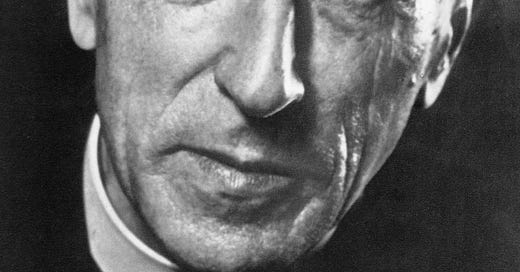In reading this translated German article over at Rorate Caeli, I can’t help but draw attention to this penultimate paragraph:
However, after long attempts at repression and whitewashing, we must now finally admit that the theological tradition in which Francis stands has always intended precisely this transmutation. Incidentally, it would be an important undertaking to examine precisely what role the three relevant predecessor popes actually played in this process. This is much more complex, especially with regard to Joseph Ratzinger, than the conservative idolatries of Benedict would like to admit. One only has to ask oneself how it can be explained that after the joint pontificate of John Paul II and Benedict XVI, which lasted well over three decades, what we have now been suffering for 11 years could happen. This cannot be due only to poor personnel policy decisions and a lack of psychological judgment.
Far be it for me to propose a solution to this large undertaking, but if I had to take a stab at it, I would say that the Bergolianism known as Hagan Lio is a boorish philistinism meant to obscure the peculiar influence of German philosophy and its mystical undergirding’s role in the continued dissolution of the supernatural in the Catholic Church. As a thought experiment, fix the Fiducia Supplicans debacle (the apparent blessing of sin) , Amoris Laetitae (admission of adulterous couples to Holy Communion) in your mind when you read this summary of The Doctrine of Coincidentia Oppositorum in Jewish Mysticism by Sanford L. Drob
The doctrine of coincidentia oppositorum, the interpenetration, interdependence and unification of opposites has long been one of the defining characteristics of mystical (as opposed to philosophical) thought. Whereas mystics have often held that their experience can only be described in terms that violate the “principle of noncontradiction,” western philosophers have generally maintained that this fundamental logical principle is inviolable.1 Nevertheless, certain philosophers, including Nicholas of Cusa, Meister Eckhardt and G.W.F. Hegel have held that presumed polarities in thought do not exclude one another but are actually necessary conditions for the assertion of their opposites. In the 20th century the physicist Neils Bohr commented that superficial truths are those whose opposites are false, but that “deep truths” are such that their opposites or apparent contradictories are true as well.2 The psychologist Carl Jung concluded that the “Self” is a coincidentia oppositorum, and that each individual must strive to integrate opposing tendencies (anima and animus, persona and shadow) within his or her own psyche.3 More recently, postmodern thinkers such as Derrida have made negative use of the coincidentia oppositorum idea, as a means of overcoming the privileging of particular poles of the classic binary oppositions in western thought, and thereby deconstructing the foundational ideas of western metaphysics.
As an exercise for the reader, think of the pervasive influence of Teilhard de Chardin on much of the hierarchy during the 20th century to the present day, the obsession with ecumenical outreach, and the condemnation of “backwardists” and “rigid ideologues” and ask yourself if the accelerating attack on tradition is really a way of attempting to deep six the foundational ideas of western metaphysics that form the basis of classical theology? After all, classical western metaphysics and the principle of non contradiction are an antidote to the cognitive dissonance of trying to keep opposing thoughts in your head. And for the bonus round: Compare
Summorum Pontificum’s “two forms of the Roman Rite”
and
Traditionis Custodes “Art. 1. The liturgical books promulgated by Saint Paul VI and Saint John Paul II, in conformity with the decrees of Vatican Council II, are the unique expression of the lex orandi of the Roman Rite”
and ask yourself if Traditiones Custodes is not the logical Chardinian evolution of Summorum Pontificum? Also, for those of you curious: I say “Holy Sacrifice of the Mass” and not “Paschal Mystery”. Note that I could have mentioned the Vatican dicastery’s new study document on the Bishop of Rome as the Teilhardian evolution of John Paul II’s Ut Unum Sint ecumenism to Pope Francis’s Church of synodality, but there’s only so many thoughts I can cram into one outburst on the microphone.
(In the meantime, I’m still wrestling with the photo editor as it only takes *.png images. Your prayers are greatly appreciated)





I have very little theology nor do I have a capacity for much to offer, in this area because I understand and learn differently to most, it would seem.
However I understand and value your work. I thank you for it and may Our Lord Jesus Christ continue to bless you n yours.
Blessings from a once lost Catholic, now home again and learning to love- with the help of our Lady.